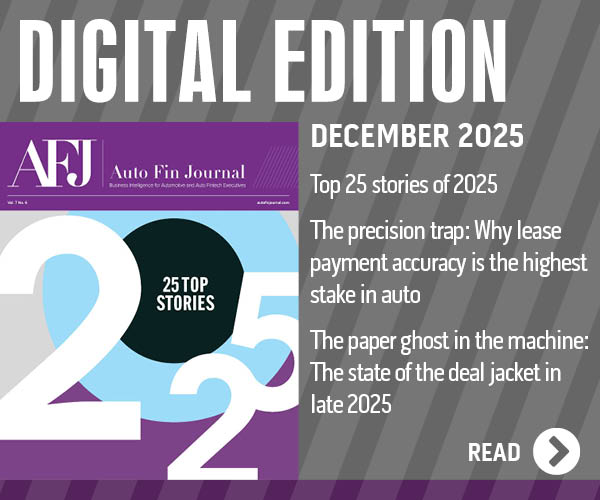Edmunds Q2 data includes more negative equity & lengthening terms

By subscribing, you agree to receive communications from Auto Remarketing and our partners in accordance with our Privacy Policy. We may share your information with select partners and sponsors who may contact you about their products and services. You may unsubscribe at any time.
Two elements of auto financing clearly surfaced when Edmunds reviewed its second-quarter data.
Analysts found that negative equity is still a notable factor, and consumers are often seeking elongated terms as a result.
Edmunds reported on Wednesday that nearly one in four consumers who financed a new-vehicle purchase with a trade-in were underwater on their prior installment contract.
In fact, analysts said 23.9% of new-vehicle sales with a trade-in had negative equity, marking the highest level Edmunds has recorded since Q1 2021 when it stood at 31.9%.
Furthermore, Edmunds indicated vehicle owners who are upside down on their installment contract owe more than ever before.
Analysts determined the average amount owed on upside-down contracts climbed to a record high of $6,255 in Q2 2024, compared to $4,487 in Q2 2022.
Subscribe to Auto Remarketing to stay informed and stay ahead.
By subscribing, you agree to receive communications from Auto Remarketing and our partners in accordance with our Privacy Policy. We may share your information with select partners and sponsors who may contact you about their products and services. You may unsubscribe at any time.
“Over the last few years, inflated vehicle trade-in values kept consumers somewhat shielded from falling underwater on their car loans,” Edmunds head of insights Jessica Caldwell said in a news release. “As the market continues to correct and trade-in values normalize, this protection is falling away, with some vehicle types more affected than others.”
And one of those types appears to be electric vehicles.
Edmunds noticed that EV owners with negative equity owe more money on their outstanding contracts than owners of ICE vehicles.
Analysts said the average amount owed on all EVs traded in for a new vehicle purchase with negative equity climbed to $10,326 in Q2 2024 from $5,469 in Q2 2022.
Edmunds’ data revealed that this is significantly higher than the amount owed on gas-powered trade-ins, which averaged $6,018 during the second quarter of 2024.
Analysts explained a contributing factor to this higher dollar amount is the fact that the average trade-in age for EVs is significantly lower than for other vehicles. Edmunds said the average trade-in age for EVs was 2.1 years compared to 3.7 years for gasoline-powered vehicles in Q2.
“It’s not surprising that EV owners are feeling the brunt of accelerated levels of depreciation,” Caldwell said. “This is a fairly standard occurrence for vehicles laden with emerging technology, and incentives on new EVs are only adding to the problem by further depressing used EV values.
“And this is certainly not making a good case for the fledgling EV market, which is already struggling to gain consumer buy-in,” she added.
Edmunds Q2 Negative Equity Data
| Year | Share of New Vehicles Purchased with a Trade-in |
Share of Trade-ins with Negative Equity |
Average Amount of Negative Equity |
Average Trade-in Age (Years) |
| Q2 2019 | 44.6% | 34.6% | -$5,317 | 3.8 |
| Q2 2020 | 45.6% | 37.2% | -$5,845 | 3.9 |
| Q2 2021 | 50.8% | 23.1% | -$4,246 | 3.6 |
| Q2 2022 | 46.8% | 14.7% | -$4,487 | 3.2 |
| Q2 2023 | 46.2% | 17.3% | -$5,543 | 3.4 |
| Q2 2024 | 44.8% | 23.9% | -$6,255 | 3.7 |
And one other note on the subject of negative equity. Edmunds pointed out the average age for vehicle trade-ins with negative equity is rising.
Analysts noticed the average age for trade-ins with negative equity was 3.7 years old compared to 3.4 years in Q2 2023 and 3.2 years old in Q2 2022.
Edmunds noted that this trend underscores how consumers who paid inflated prices for new vehicles during the past few years are at extended risk of falling underwater on their financing as the market continues to normalize.
Edmunds’ director of insights Ivan Drury said these owners will likely need to hold onto their vehicles for longer to avoid trading in at the steepest point of the depreciation curve.
“Negative equity only becomes a problem when you trade in a vehicle too soon,” Drury said in the news release. “If you’re worried about being underwater on your current car loan, your best bet is to keep your vehicle as long as possible and keep up with regular maintenance. And if you’re concerned about the depreciation that comes with buying an EV but still want to go green, consider buying used to offset some of that depreciation, or avoid ownership altogether and lease instead.”
How consumers are responding
Trends in Q2 auto finance data point to new-vehicle buyers “stretched to their financial limits,” according to Edmunds.
While inventory has improved, which has led to some discounting, analysts explained vehicle prices remain elevated, and lingering high borrowing costs have only made buying a new vehicle more challenging.
And it’s all made the thought of acquiring a used vehicle even more appealing. Here is the Edmunds data to support that hypothesis.
Quarterly New-Car Finance Data (Averages)
| 2024 Q2 | 2023 Q2 | 2024 Q1 | |
| Term | 69.0 | 68.5 | 68.3 |
| Monthly Payment | $740 | $733 | $735 |
| Amount Financed | $40,873 | $40,356 | $40,427 |
| APR | 7.3 | 7.1 | 7.1 |
| Down Payment | $6,579 | $6,823 | $6,682 |
Quarterly Used-Car Finance Data (Averages)
| 2024 Q2 | 2023 Q2 | 2024 Q1 | |
| Term | 69.7 | 70.2 | 69.7 |
| Monthly Payment | $552 | $569 | $546 |
| Amount Financed | $28,166 | $29,665 | $27,774 |
| APR | 11.5 | 11.0 | 11.7 |
| Down Payment | $4,140 | $4,106 | $4,133 |
Edmunds noted the share of consumers taking on new-vehicle monthly payments of $1,000 or more was 17.8% in Q2 2024, just shy of the record 17.9% share in Q4 2023, which analysts note is a quarter when vehicle prices are seasonally higher.
Furthermore, Edmunds noted that roughly 70% of new-vehicle financing booked during the second quarter had terms of more than 60 months.
Analysts said the average new-vehicle contract term in Q2 2024 was 69 months, the highest point since the end of 2022 when average new-vehicle interest rates sat under 7%.
“High interest rates continued to be a heavy drag on new-vehicle sales growth in the second quarter,” Caldwell said in another news release. “In theory, improved inventory and growing incentives should paint a more consumer-friendly picture of the market, but the reality is most Americans can’t buy their cars with cash, and increased borrowing costs continue to be a major roadblock when buying a new vehicle.”


